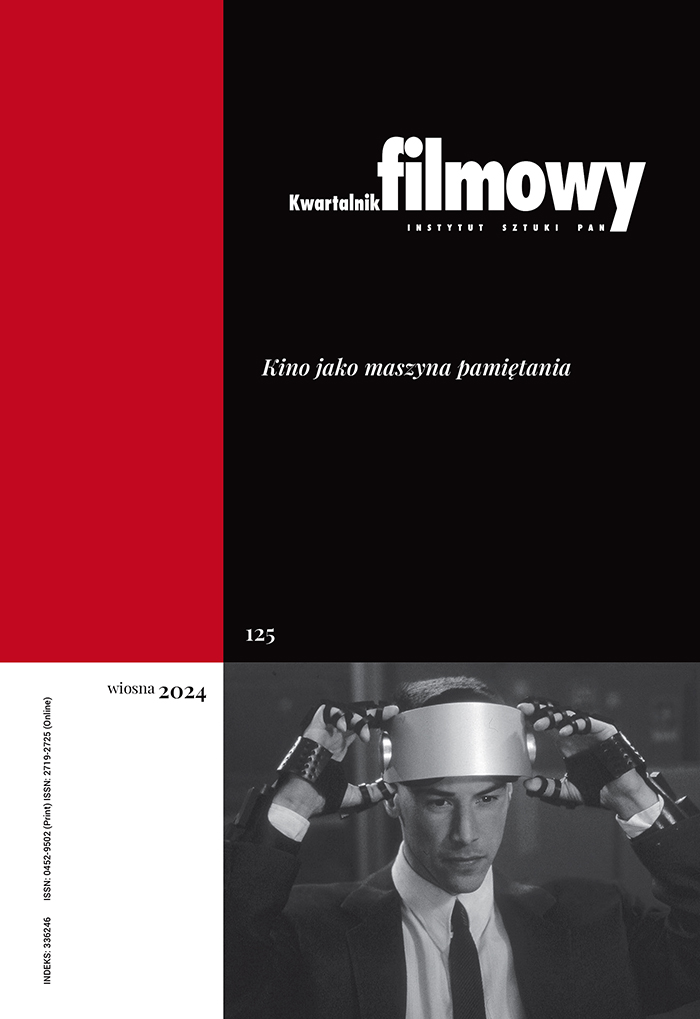“Where a ‘Fragment’ Is More Suited to Be Filmed Than the Whole Play”: “Wozzeck” by Georg C. Klaren
Abstract
In December 1947 the world saw the first postwar German film adaptation of a literary work. That was Wozzeck directed by Georg C. Klaren, a film adaptation of a play by Georg Büchner. The choice of the 19th century drama, preserved only in fragments and incomplete scenes, is far from obvious and makes one think about a number of questions, starting with the process of film adaptation of fragmentary work of literature (how far could the director be faithful to the author and the original piece of literature, given its fragmentary and unfinished nature? did the fragmentary character of the play aid or hinder the process of adaptation?), and ending with the ambiguous message of Klaren’s film (what is the purpose of the numerous anachronisms present in the film? what was the point of showing an audience, still traumatised by war, a post-romantic drama?).
Keywords:
Georg C. Klaren, Georg Büchner, German cinemaReferences
Bernhardt, Rüdiger. 2010. Erläuterungen zu: Georg Büchner „Woyzeck“. Hollfeld: C. Bange Verlag.
Google Scholar
Buck, Theo. 1981. „Man muß die Menschheit lieben”. W: Text + Kritik. Georg Büchner III, Monachium: Edition Text + Kritik.
Google Scholar
Büchner, Georg. 1956. Utwory zebrane, Warszawa: PIW.
Google Scholar
Hopfinger, Maryla. 1974. Adaptacje filmowe utworów literackich. Wrocław: Ossolineum.
Google Scholar
Horak, Jan-Christopher. 1986. Postwar traumas in Klaren’s „Wozzeck“ (1947). W: E. Rentschler (red.). German film and literature. Adaptations and transformations, Nowy Jork: Routledge.
Google Scholar
Didi-Huberman, Georges. 2011. Strategie obrazów. Oko historii 1. Tłum. J. Margański. Kraków: Ha!art.
Google Scholar
Janion, Maria. 1984. Czas formy otwartej. Warszawa: Państwowy Instytut Wydawniczy.
Google Scholar
Gehler, Fred. Der Platz ist verflucht. http://www.filmportal.de/node/52389/material/704846
Google Scholar
Miczka, Tadeusz. 1998. Adaptacja. W: A. Helman (red.). Słownik pojęć filmowych, t. 10, Kraków: Wydawnictwo Uniwersytetu Jagiellońskiego.
Google Scholar
Pinkert, Anke. 2008. Film and memory in East Germany, Bloomington: Indiana University Press.
Google Scholar
Saryusz-Wolska, Magdalena. Kryzys i powrót patriarchalnego spojrzenia w ikonografii niemieckich ruin 1945–1949. http://widok.ibl.waw.pl/index.php/one/article/view/111/229
Google Scholar
Soldat Wutzig als Filmheld. Dr. Georg C. Klaren verfilmt Büchners „Woyzeck“. Besuch im Atelier. http://www.filmportal.de/node/52389/material/704844.
Google Scholar
Authors
Anna R. Burzyńskakwartalnik.filmowy@ispan.pl
Jagiellonian University Poland
Adiunkt w Katedrze Teatru i Dramatu Wydziału Polonistyki Uniwersytetu Jagiellońskiego. Jej zainteresowania badawcze obejmują najnowszy teatr europejski oraz dramat polski i niemiecki od XIX w. po współczesność. Zajmuje się także krytyką teatralną. Od 2000 r. współredaguje „Didaskalia”. W latach 2004-2010 była recenzentką i publicystką „Tygodnika Powszechnego”. Opublikowała książki: Mechanika cudu (2005), The Classics and the Troublemakers (2008), Maska twarzy (2011).
Statistics
Abstract views: 182PDF downloads: 126
License
Copyright (c) 2014 Anna R. Burzyńska

This work is licensed under a Creative Commons Attribution 4.0 International License.
The author grants the publisher a royalty-free non-exclusive licence (CC BY 4.0) to use the article in Kwartalnik Filmowy, retains full copyright, and agrees to identify the work as first having been published in Kwartalnik Filmowy should it be published or used again (download licence agreement). The journal is published under the CC BY 4.0 licence. By submitting an article, the author agrees to make it available under this licence.
In issues from 105-106 (2019) to 119 (2022) all articles were published under the CC BY-NC-ND 4.0 licence. During this period the authors granted a royalty-free non-exclusive licence (CC BY-ND 4.0) to use their article in „Kwartalnik Filmowy”, retained full copyright, and agreed to identify the work as first having been published in our journal should it be published or used again.











